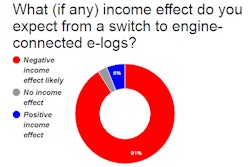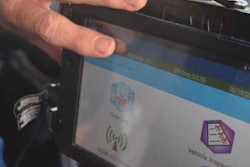
The first questioner asked about the Android tablet that Memphis’ fleet issued for interfacing with the electronic logging program:
“What if your tablet stopped responding?” –Kenneth
By law we are required to carry an extra paper log book in case that happens. It would be a real pain reconstructing the previous eight days so you could present a legal book and the freight could be delivered, but you wouldn’t be dead in the water.
Ponway65, an owner-operator mandated by his company to begin e-logs in two weeks, contemplates that this must be what it felt like to the “cowboys when the fences went up,” and asks, “What was the hardest thing to deal with” when making the transition?
First of all, that’s a great analogy, because e-logs are just that, a digital boundary that restricts freedom of movement. I have discovered, to my surprise, however, that there is more flexibility to e-logs than I originally would have thought. The eight-two split will become your new best friend, especially if run regional routes. Your device will keep track of how long you can go before taking your two-hour break, once you get rolling, so there’s some dummy-proofing built in to that. For the life of me, I never fully understood how to pull off an eight-two split without being in violation until I got on e-logs, and now I just log in and ride until my clock tells me I have to stop and take a break.
Also, at my carrier, we are allowed what are called, incidentally, geofences, which are grace areas within specific locations where you are allowed to move without kicking yourself back into driving mode. For example, you may drive two miles within the campus of certain mega warehouses — from the bullpen, to the dock, and back. As long as you’re within the geofence, you’re fine.
As to your question about the hardest thing to deal with, I suppose it would be how the technology has forced the changing of the guard within the management structure of our company. I’ve always seemed to be most at home working for people who were capable of running the very load they were asking me to haul — you know, the good ol’ boys. Some of the names of my former employers included Darrel, Bobby, and Big Daddy (seriously).
So when the nice young man tasked with administering the e-log program pulled in the gravel terminal lot with his SmartCar and Coexist bumper sticker, I intuited he had never found himself on the cruel back side of the Bronx, defecating into a Thank You bag. I suppose, conversely, to him I was a knuckle-dragging Neanderthal, with my pearl snap western shirt, belly and boots. He may have correctly surmised I had never been offered a job as a Best Buy Geek Squad tech.
That said, is it the worst thing in the world to live so long that one day you are older than your boss? Turns out he’s been a great guy to work with, which has made all the difference.
Sometimes the best way to start a sentence to a guy not named Big Daddy is, “I know this isn’t your normal area of expertise, but …”
Which brings me right back to where we started seven installments ago — if you are working for decent people who allow you enough time to haul your freight, this isn’t that bad. In fact, at the risk of throwing all my outlaw creds out the window, after taking into consideration the raise, the increase in speed, the lowering of my blood pressure, the weight loss … I don’t think I would go back to paper if I could. –Wes Memphis










